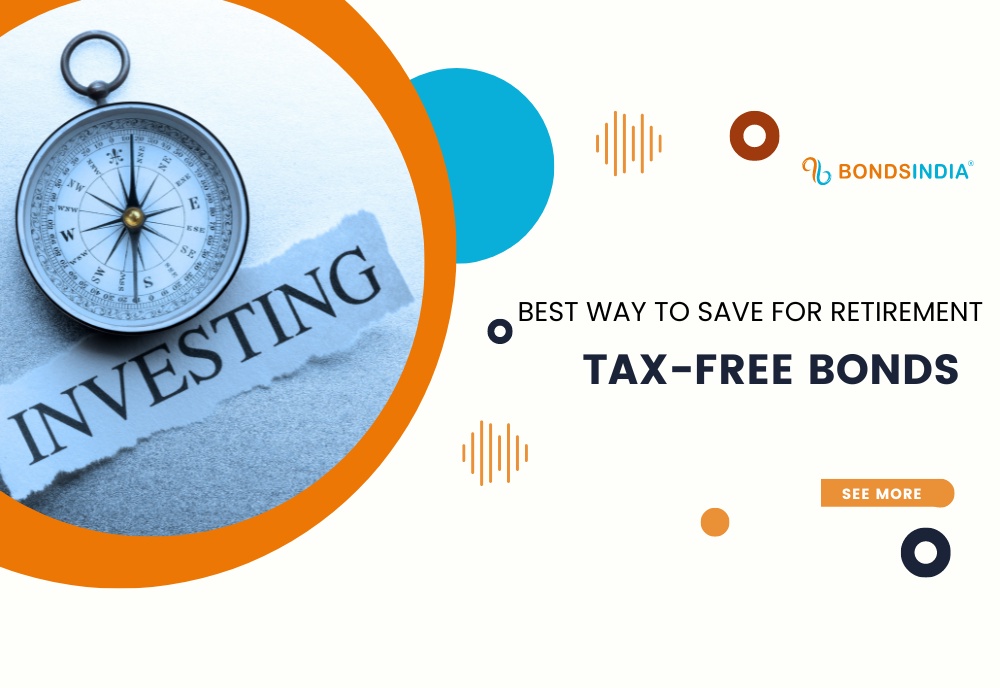As you prepare for retirement, there are many things to consider – from the best way to save your money to the impact of taxes on your savings. One of the most overlooked retirement options is tax-free bonds; we'll discuss why they could be the best way for you to save and secure your financial future.
What are Tax-Free Bonds?
When it comes to saving for retirement, there are a lot of options out there. But if you want to keep more of your money in your pocket, tax-free bonds are the way to go.
Tax-free bonds are bonds exempt from federal, state, and local taxes. That means you get to keep more of your money when you invest in them. And over time, those savings can add up.
There are a few different types of tax-free bonds, but the most popular ones are municipal bonds. State and local governments issue municipal bonds to finance projects like roads, schools, and parks. And because the government backs them, they're considered very safe investments.
Another type of tax-free bond is an I Bond. I Bonds are issued by the federal government and offer a fixed interest rate plus an inflation adjustment. So, even if inflation goes up, your investment will still be worth more in the long run.
Tax-free bonds are a great option if you're looking for a safe and easy way to save for retirement. With their guaranteed returns and tax advantages, they're hard to beat.
The Benefits of Tax-Free Bonds
There are many benefits of investing in tax-free bonds. The most significant advantage is that the interest earned on these bonds is exempt from federal, state, and local taxes. This can save you considerable money over the bond's life.
Another benefit of tax-free bonds is that they are typically very safe investments. They are often backed by the issuing government's full faith and credit, which means there is little risk of default.
Finally, tax-free bonds can be a great way to diversify your portfolio. Investing in different types of tax-free bonds can reduce your overall risk while still earning a decent return on your investment.
How to Invest in Tax-Free Bonds
Many people consider tax-free bonds as the best way to go when it comes to retirement. After all, who doesn’t want to avoid paying taxes on their investment earnings? But before you jump into investing in tax-free bonds, you should know a few things.
First, it’s essential to understand that there are two tax-free bonds: those issued by state and local governments (municipal bonds) and those issued by the federal government (Treasury bonds). Municipal bonds are typically used to finance projects like roads, bridges, and schools, while Treasury bonds are used to fund the national debt.
Second, you must be aware of the tax rules that apply to each type of bond. Municipal bonds are generally exempt from federal income tax but may be subject to state and local taxes. Treasury bonds, on the other hand, are exempt from all taxes.
Finally, it’s important to remember that even though tax-free bonds offer great benefits, they also come with risks. Before investing in any bond, make sure you understand the risks involved.
**Now that you know a little more about tax-free bonds, here are a few tips on how to invest in them: **
- Decide which types of bonds is right for you. If you’re looking for a safe investment with relatively low risk, then a Treasury bond might
- When it comes to saving for retirement, there are a lot of options out there. But one of the best ways to do it is through tax-free bonds.
- Tax-free bonds are a great way to save for retirement because they offer tax-free interest. That means you won’t have to pay any taxes on the claim you earn from these bonds.
- There are two central tax-free bonds: municipal bonds and government bonds. Municipal bonds are issued by state and local governments, while the federal government issues government bonds.
- Municipal bonds are a great option if you want to invest in tax-free bonds because they offer higher interest rates than government bonds. However, they also come with more risk because there’s a chance that the issuer could default on the bond.
- Government bonds are a safer option but usually offer lower interest rates. However, there’s no risk of default because the federal government backs them up.
- Government bonds are probably your best bet if you’re looking for a safe and stable way to invest in tax-free bonds. But if you’re willing to take on some additional risk in exchange for higher interest rates, municipal bonds might be a better option.
Who Should Invest in Tax-Fee Bonds?
The best candidates for tax-free bonds are those in the highest tax bracket with a long investment horizon. If you are in the 25% federal tax bracket and live in a state with a 5% marginal tax rate, you would effectively be in the 30% tax bracket. In this case, a tax-free bond yielding 3% is the equivalent of a taxable bond yielding 4.3%.
Taxable bonds may be a better choice if you are in a lower tax bracket or have a shorter investment horizon. For example, if you are in the 15% federal tax bracket and live in a state with no income tax, you would effectively be in the 15% tax bracket. In this case, a taxable bond yielding 3% is equivalent to a tax-free bond yielding 3%.


No comments yet